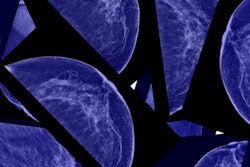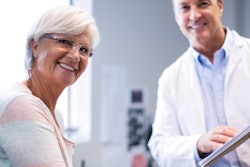
Coverage in Google News about mammography screening has the potential to influence public perception of the exam and could even affect women's adherence to screening protocols, according to a study published online July 7 in Academic Radiology.
 Dr. Andrew Rosenkrantz from NYU Langone Medical Center.
Dr. Andrew Rosenkrantz from NYU Langone Medical Center.Researchers from NYU Langone Medical Center in New York City found that online coverage of breast cancer screening took a distinct turn from a neutral stance to a favorable or unfavorable one after the U.S. Preventive Services Task Force (USPSTF) released guidelines in 2009 that recommended women be screened every other year starting at age 50. This ignited debate about when women should start screening and how often they should be screened, wrote study authors Dr. Leng Leng Young Lin and Dr. Andrew Rosenkrantz.
Although the majority of articles took a favorable position toward mammography screening, radiologists should consider how online news affects patients, Rosenkrantz told AuntMinnie.com.
"As radiologists, we're more likely to be familiar with how mammography is covered in our own field," he said. "But we need to be aware that our patients are getting information about screening mammography from a variety of sources, and these sources could not only influence their thinking but also their screening compliance."
Google search
The USPSTF's 2009 screening mammography guidelines conflicted with recommendations on record from the American College of Radiology (ACR), the American Cancer Society (ACS), and the American College of Obstetricians and Gynecologists (ACOG) -- all of which at the time stated that women should begin annual screening at age 40. The conflict between guidelines generated controversy and confusion among patients and primary care providers, especially once the debate over screening mammography began to be highlighted in the media.
Lin and Rosenkrantz sought to characterize online news coverage relating to mammography and to explore the possible effect of the 2009 USPSTF change. They used Google News to search U.S. news sites between 2006 and 2015 for the terms "mammography" and "mammogram," recorded the top 100 search results, and reviewed the articles.
Most articles came from local outlets (50%), national sites (24%), and nonimaging medical sources (13%). About 6% came from entertainment or culture sites, 4% from business outlets, 1% from peer-reviewed journals, and 1% from radiology news outlets.
The controversy over screening mammography was the most common topic (29%). New breast imaging technologies was the second most common topic (23%), while dense breast tissue and public screening initiatives tied for third place (11%).
After 2010, the position of articles on screening mammography shifted from neutral to favorable or unfavorable; national outlets were more likely to focus on the screening controversy and take an unfavorable stance toward breast screening, according to authors. In 2015, 59% of the articles Lin and Rosenkrantz identified had a favorable stance toward screening mammography, while 16% were unfavorable and 25% were neutral.
It's good news that the majority of articles were positive, according to Rosenkrantz.
"I would hope that the fact that articles about screening mammography tended to be favorable reflects the volume of compelling data that supports the role of mammography in saving lives," he said.
Media savvy
The findings suggest there's still a need to improve patient compliance with screening mammography. This probably can't be accomplished through peer-reviewed literature.
"Patients are getting information about mammography from a variety of outlets -- not just from mainstream news media, but also from entertainment and business sites," Rosenkrantz said. "We need to keep that in mind as we interact with patients and referring physicians."
In fact, radiologists can take advantage of their expertise by making themselves available to the media. Lin and Rosenkrantz found that many of the favorable articles included quotes from radiologists, the ACR, and other national specialty organizations.
"Radiologists have done a good job advocating for mammography screening. It shows that when we're engaged and collaborating, we can impact public perception of the issue," he said. "We need to be willing to speak to the media about important health issues like breast cancer screening."




















